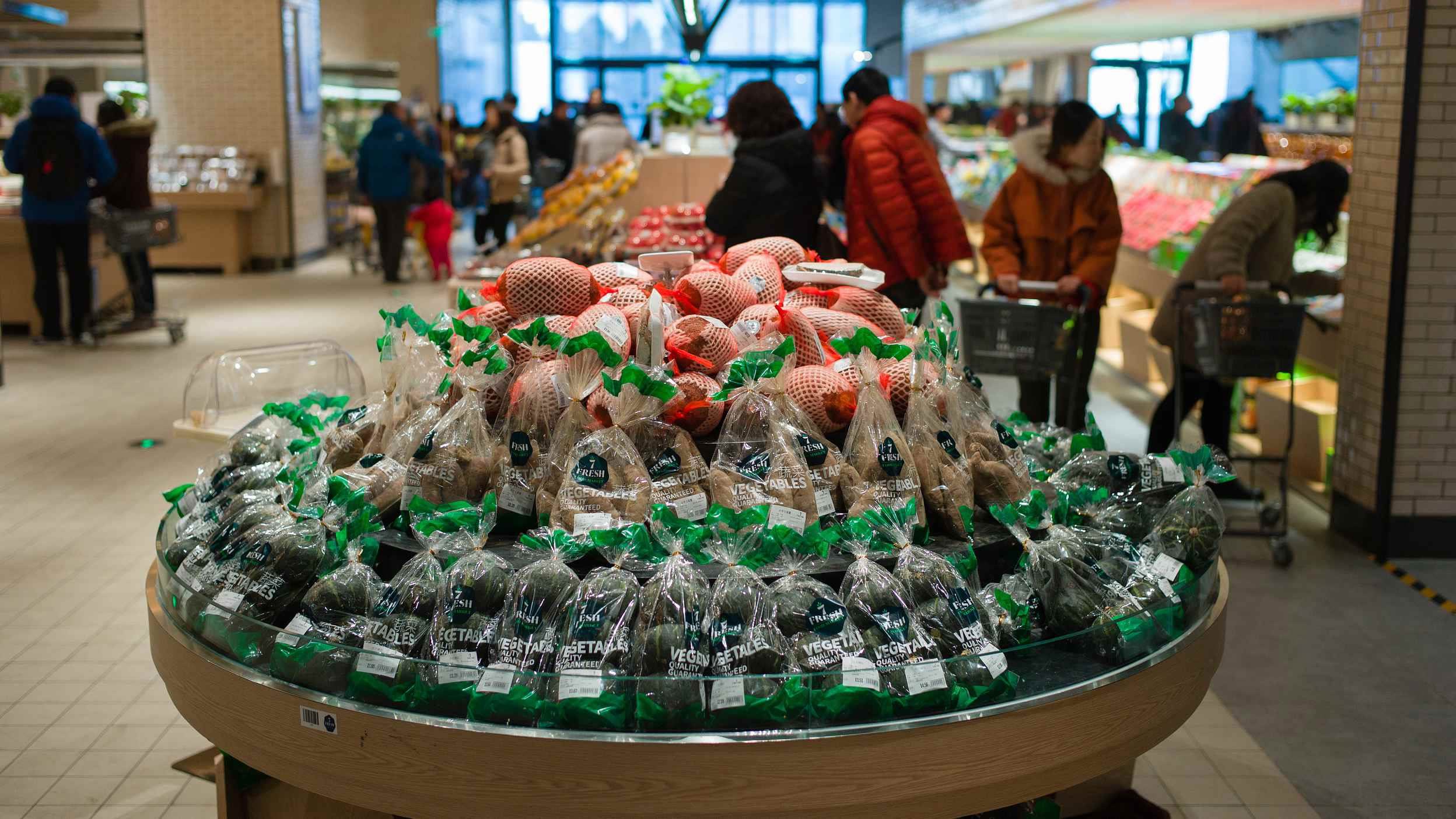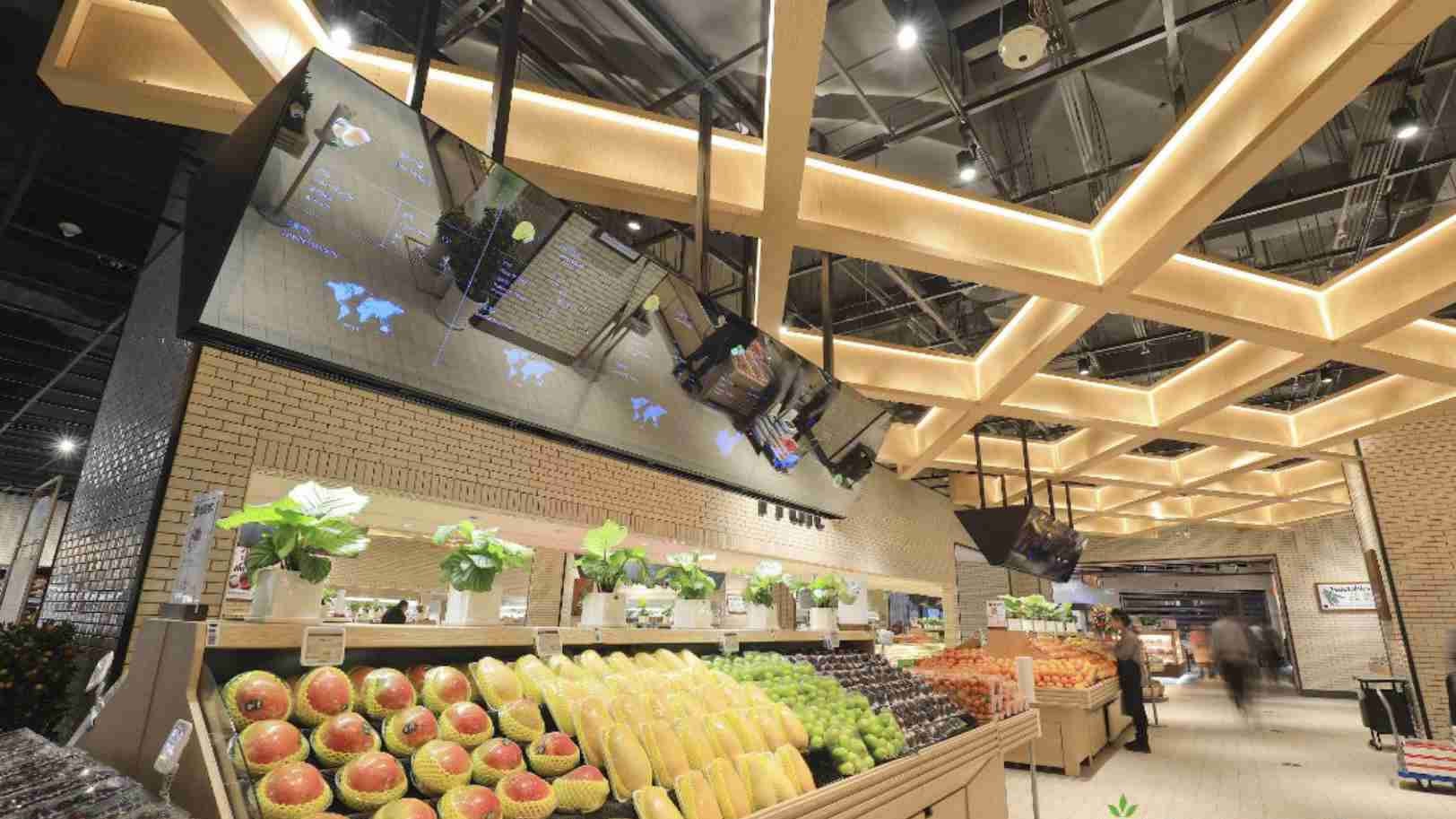
Business
10:34, 12-Feb-2018
E-commerce companies eye fresh food market
By CGTN’s Wei Lynn Tang

China’s e-commerce bigwigs have widely touted the "way forward" for retail: the integration of their online-offline sales channels. And they have picked the fresh food sector to kick start this strategy.
E-commerce players are opting for a new income stream and capitalizing on big data to capture consumption trends, while consumers on the other hand are gladly embracing this upgrade in lifestyle.
JD.com’s setting up of 7Fresh last month marks the e-commerce sector’s latest move in companies building their own brick-and-mortar fresh food stores.
Alibaba Group already operates Hema Xiansheng stores, while Tencent Holdings has invested in Yonghui Superstores.
Why the fresh food sector?
Professor Liu Chunsheng, associate professor at the Central University of Finance and Economics said such ventures are partly due to the unique features of the fresh food sector.
"If you look at storage, logistics, packaging, and price – the difference between online and offline channel isn’t very large. Both also require high upfront costs. Secondly, this sector’s level of consumption is high. It has scale because of China’s huge population," Liu said.
China’s online fresh food sector grew at a compound annual growth rate of over 80 percent from 2013 to 2016.
In 2017, the gross merchandise value of this sector rose by almost 60 percent on an annual basis to hit 139 billion yuan, according to market research firm iResearch.
Liu said the potential of this online-offline integration is huge.
"China’s growth rate in terms of its number of Internet users has been falling. From this perspective, e-commerce companies have gone to look for new forms of business to protect their market margins. As consumers, we also need to be educated, as we grow to be more reliant on mobile phones," he explains.

JD's newly-opened 7Fresh offline supermarket in Beijing /Photo courtesy JD.com.
JD's newly-opened 7Fresh offline supermarket in Beijing /Photo courtesy JD.com.
Online fresh food only accounts for 3.4 percent of the total retail sales of agricultural products, indicating huge potential, according to iResearch.
Near-term profits are unrealistic expectations
This sector is one that requires huge costs – especially that of building a complete cold chain logistics platform.
China E-Commerce Research Center back in 2015 quoted reports stating that only one percent of the 4,000 online fresh food companies were profitable, with 88 percent losing money.
Liu said it is normal not to expect profits in the short term, arguing it’s a new innovation method.
He added that the fresh food sector will continue to slowly consolidate, as seen in other related e-commerce sub-sectors such as the sharing economy in transport and food mobile apps.
At JD’s 7Fresh store, you can pick seafood and have it cooked on-site. And if you’re curious, you can find out the origin of the fruits by scanning it.
Impact towards smaller, traditional players
Wang Xuelin, a local fresh food store owner acknowledges he is concerned with the entry of big e-commerce players into their physical stores.
While his store is profitable, margins have been falling, hovering at a gross level of 20 percent currently.
"Small stores like us can’t compete with the big boys. But as long as we manage our store well, keep our fruits fresh and liked by customers, we should be okay,” Wang says.
Meanwhile, Professor Liu said while smaller, traditional stores will be affected, it will not be to the extent of these smaller players “retreating”.
“These big e-commerce players are targeting the middle- to upper-class segments, while the traditional stores are geared more towards the mass market,” he said.
Nonetheless, Liu believes in the longer-term effects as supermarkets have to embrace the "new era" of selling their goods online and utilizing big data.
He also believes the "new era" of online-offline integration seen in the fresh food sector will expedite changes in other retail sectors.

SITEMAP
Copyright © 2018 CGTN. Beijing ICP prepared NO.16065310-3
Copyright © 2018 CGTN. Beijing ICP prepared NO.16065310-3